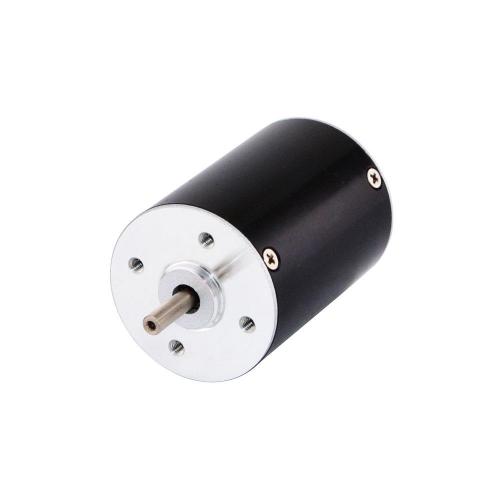What is a brushless DC motor and how does it work?

A brushless direct current motor, abbreviated as brushless DC motor or BLDC motor, also known as an electronically commutated motor (ECM or EC motor) or synchronous DC motor, is a synchronous motor that uses a direct current power supply. The brushless DC motor overcomes a series of previous problems caused by mechanical commutation and brushes on the basis of maintaining the superior speed regulation performance of traditional DC motors, and is now being better applied in various areas of society. From simple drilling rigs to complex industrial robots, many machines and equipment use brushless DC motors to convert electrical energy into rotary motion.
Working Principle of BLDC motors
The main components of a brushless DC motor include a stator and a rotor. The stator is fixed and the rotor is in motion. The rotor has permanent magnets attached to it and the stator is equipped with windings.
The energized winding generates a magnetic field, then the winding is repelled by the magnetic poles on one side and attracted by the magnetic poles on the other side, and rotates under this effect. During the rotation, a reversed current flow is supplied to the winding to keep it rotating. This process occurs with both brushed DC motors and brushless DC motors.
The only difference is in the way these two motors switch the current applied to the wire windings. In a brushed DC motor, this is a mechanical process triggered by a commutator with brushes. By changing the position of the brushes, the direction of the current can be changed. In a brushless DC motor, instead of using brushes, it uses electronic commutators to change the direction of current flow. Brushless DC motor controllers monitor the position of the permanent magnets on the rotor by using sensors (such as Hall-effect sensors) or no sensors to switch the current and energize the windings on the stator at the correct time. Most brushless DC motors use three Hall sensors that are embedded in the stator to detect the position of the rotor.
Types of BLDC motors
Brushless DC motors can be divided into two types: outrunner and inrunner, depending on the position of the stator. The stator is inside and the rotor is outside is called the outrunner. A rotor located in the center of the motor with the stator winding around the rotor is called an inrunner.
Three-phase brushless DC motors have two different types of winding connections. Wye (Y) or star connection is one in which the windings meet in the center to form a wye. The windings connected in series to form a triangle is delta (Δ) connection.
Advantages and disadvantages of BLDC motors
Brushless DC motor has the advantages of low temperature rise, low noise, high torque, high speed, high reliability, good stability, low energy consumption, non-sparking thus suitable for explosive places, long working life, and an overall reduction in electromagnetic interference (EMI). BLDC motors can be cooled by conduction and do not require airflow cooling inside the motor.
The disadvantages of brushless DC motors are that they are more costly. It requires a higher cost controller and a more complex motor speed controller. The maximum power that can be supplied to a brushless DC motor is almost entirely limited by heat. Excessive heat can weaken the magnets and can damage the insulation of the windings.
Post Your Ad Here
Comments